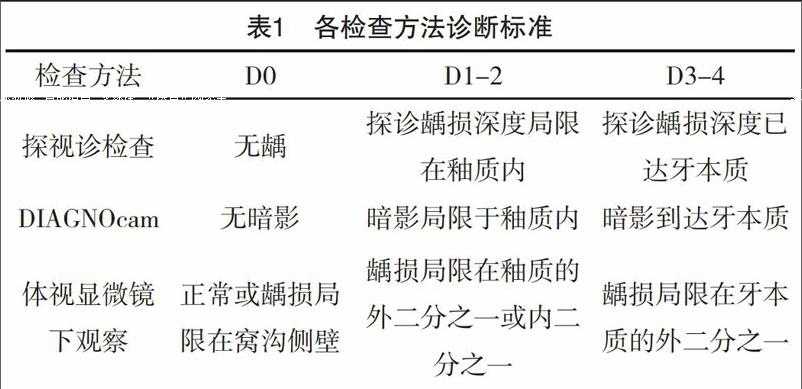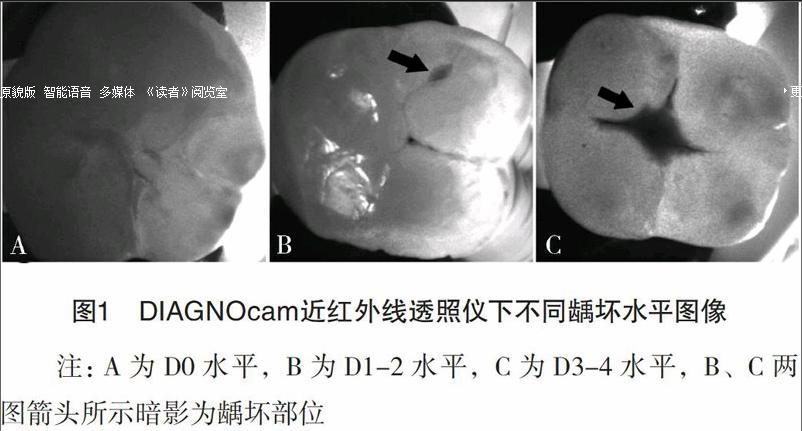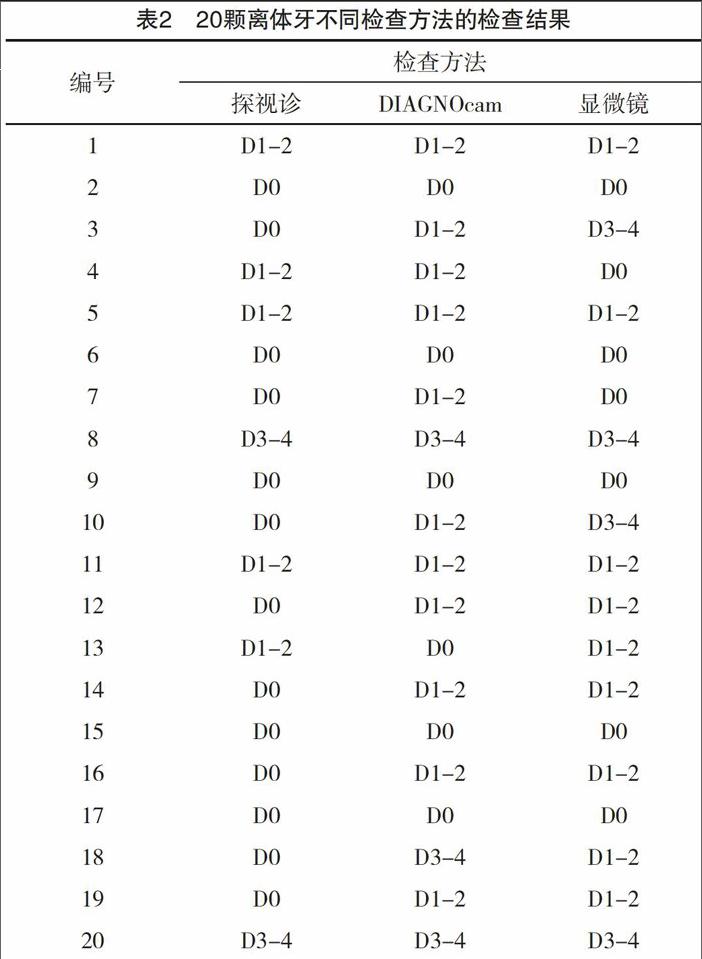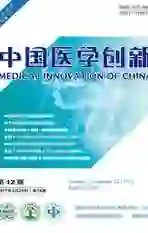近红外线透照龋齿探测仪对面龋的诊断效果
2017-05-11张丽丽牛赟武峰李宪起
张丽丽+牛赟+武峰+李宪起



【摘要】 目的:探讨应用近红外线透照龋齿探测仪(DIAGNOcam)检查面龋损,对比探视诊、体视显微镜的检查结果,评估DIAGNOcam的诊断效果。方法:收集20颗离体牙分别通过探视诊检查、DIAGNOcam仪器检查,不同操作者分别记录结果。龋齿染色液染色后显微镜下检查龋损,并作为金标准,评估探视诊与仪器检查龋损的一致性、特异性、灵敏性。结果:两种检查方法在D0水平一致性较差,D1-2水平一致性一般,D3-4水平有高度的一致性。探視诊检查在D1-2水平灵敏性最低,D3-4水平特异性最高;DIAGNOcam检查在D1-2水平灵敏性明显高于探视诊检查,在D3-4水平特异性最高。结论:近红外线透照龋齿探测仪相对传统方法,更有利于面早期龋的诊断,但仍需要进一步临床研究分析其效果。
【关键词】 近红外线透照龋齿探测仪; 面龋; 探视诊
Diagnostic Effect of DIAGNOcam in Early Occlusal Caries/ZHANG Li-li,NIU Yun,WU Feng,et al.//
Medical Innovation of China,2017,14(12):008-011
【Abstract】 Objective:To explore the effect of DIAGNOcam in early occlusal caries, by comparing the results of visual examination and stereomicroscope,to evaluate the diagnostic effect of DIAGNOcam. Method:Twenty extracted teeth were examined by visual examination and DIAGNOcam examination,different examiners recorded the results separately.Staining the teeth,then observing under the stereomicroscope,the results recognized as gold standard to evaluate the sensitivity,specificity and coherence between the two groups.Result:The consistency of the two methods in the D0 level was poor,the D1-2 level was generally consistent,and the D3-4 level was highly consistent.The sensitivity of visual examination at D1-2 was the lowest,and the specificity of D3-4 was the highest;the sensitivity of DIAGNOcam at D1-2 was significantly higher than that of visual examination, and the specificity at D3-4 was the highest.Conclusion:The DIAGNOcam is helpful to diagnose the early occlusal caries compared to traditional methods,further clinical investigations are needed to analyze its evaluation.
【Key words】 DIAGNOcam; Occlusal caries; Visual examination
First-authors address:Shanxi Medical University Stomatological Hospital,Taiyuan 030001,China
doi:10.3969/j.issn.1674-4985.2017.12.003
在临床口腔检查与保健工作中,早期龋的发现和治疗对于口腔科医生来说是一个挑战,容易发生漏诊而延误早期治疗[1]。因早期龋时,牙齿色形质改变不明显,无明显龋洞,因此多数情况下,需要医生具备较为丰富的临床经验才敢于做出诊断[2]。近年来,为了改善这一状况,学者们提出了很多新的诊断新思路,但这些新的诊断方法也并不完全可靠[3-6]。近年来,出现一种利用近红外光透照诊断龋齿的仪器,即DIAGNOcam(Kavo公司,德国)[7-8],通过透照暗影反应龋损的程度。目前国内尚无此仪器检测龋损效果的研究,国外也较少,因此本试验在离体牙上通过探视诊观察颌面龋坏程度,以显微镜下观察龋损结果作为金标准,评估该设备诊断面龋的准确性及临床应用价值,现报道如下。
1 材料与方法
1.1 仪器与材料 近红外线透照龋齿探测仪(DIAGNOcam,Kavo Germany)、口腔显微镜(ZEISS Germany)、生理盐水、双氧水、龋齿染色液(Sable Seek caries indicator, Ultradent USA)。
1.2 方法
1.2.1 离体牙的收集 收集20颗离体前磨牙与磨牙,牙体完整,肉眼未见明显龋洞或充填体,冲洗清理,编号,双氧水浸泡24 h后生理盐水保存。
1.2.2 探视诊检查 取出检测牙,清洁颌面沟裂,干净后吹干,一名有临床经验医生检查,按照龋病诊断标准分为D0、D1-2、D3-4,视诊结合探诊初步判定是否有龋及龋损程度,记录结果,见表1。
